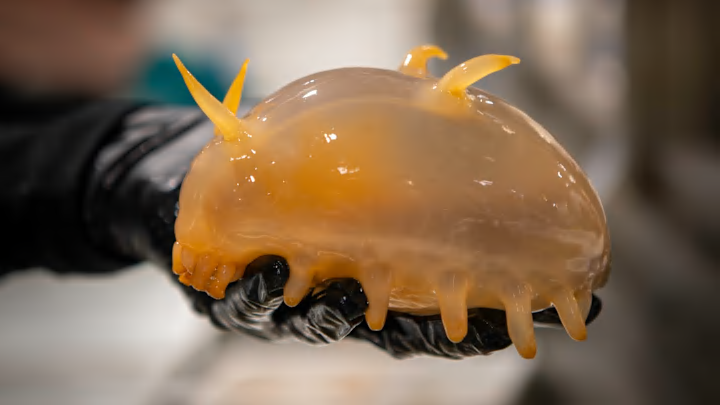The depths of the ocean are still filled with mysteries. Scientists constantly discover freaky creatures in our vast seas, from the giant isopod to the frilled shark. On a recent expedition, scientists catalogued a cast of creatures that looked like they crawled off a spaceship.
According to the Australian Broadcasting Corporation, Australian researchers came across the marine life while onboard the RSV Nuyina as part of the Denman Marine Voyage. The goal of the 60-day journey across the Southern Ocean is to study the effects of rising ocean temperatures on the Denman Glacier, one of the fastest-melting glaciers in East Antarctica, which lost 3.1 miles of its length between 1996 and 2018.
While at sea, the scientists trawled up some unusual critters. The sea pig was among the most bizarre-looking. While these poisonous sea cucumbers aren’t biologically related to the livestock, they share the same name because of their similarly soft, sausage-shaped bodies and short legs. They usually grow 1.5 to 6 inches long and scavenge for decaying matter and carcasses at 4000 to 16,000 feet deep.
Scientists also got their hands on sea spiders during the voyage. Despite their name, sea spiders are more closely related to crabs, but like arachnids they have an exoskeleton and eight legs. Sea spiders (class Pycnogonida) are diverse, with over 1300 species. The researchers caught sea spiders that are as large as a human hand, but some species can grow up to 20 inches in leg span.
The researchers used a “wet well,” which keeps sea animals healthy after collection, to examine delicate creatures like Clio pyramidata, a species of sea butterfly. This minuscule sea snail's diet includes phytoplankton and juvenile copepods, tiny crustaceans found in nearly all marine habitats. They usually grow up to nine millimeters (about 0.35 inches) long. Live Science reports that the sea butterfly the scientists caught laid eggs on the ship, allowing the scientists to study the species’ egg development for the first time.
While these species were previously known to science, the researchers say it’s likely that some undiscovered species were also included in their haul. You can stay up-to-date on their journey via the Denman Marine Voyage page.
Read More About Underwater Animals:
